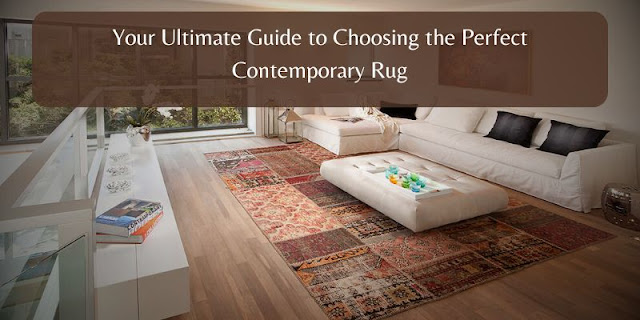The Magic of Patterns: Decoding the Design Language of Oriental Rugs
Oriental rugs are more than just floor coverings—they are works of art that tell stories, preserve culture, and embody craftsmanship honed over centuries. With their rich colors, intricate patterns, and symbolic motifs, these rugs have captivated homeowners, designers, and collectors worldwide. But what makes Oriental rugs truly magical is the language of design embedded within each piece. The patterns woven into the fabric of Oriental rugs hold deep meaning, rooted in the history and traditions of the cultures that created them.
In this blog, we’ll explore the design language of Oriental rugs, revealing the significance of their patterns, the art of craftsmanship behind them, and the timeless appeal they bring to any space.
Origins and Cultural Significance
Oriental rugs are traditionally produced in countries across Asia, including Iran, Turkey, Afghanistan, India, and China. Each region has its own unique approach to rug-making, influenced by local history, religion, and artistic traditions. The design patterns used in these rugs reflect the cultures and values of their makers. On the other hand, Turkish and Central Asian rugs often incorporate geometric shapes and tribal symbols that are rich in cultural meaning.
The cultural significance of these rugs extends beyond their aesthetic beauty. Many Oriental rugs carry symbols of protection, prosperity, and spirituality. In tribal communities, rugs were often created as part of life’s most significant events—births, marriages, and religious ceremonies—making each piece a unique reflection of the weaver’s world.
Decoding the Patterns in Oriental Rugs
The intricate designs found in Oriental rugs are carefully crafted to convey specific meanings, whether through floral arrangements, geometric patterns, or stylized animals. Here’s a closer look at some of the most common patterns and their symbolism:
1. Medallion Patterns
Medallions are central motifs commonly found in Persian rugs. These round or oval designs are often placed at the center of the rug, symbolizing unity, wholeness, and the universe. Medallion patterns are typically surrounded by intricate floral or geometric borders, creating a visual balance between the center and the edges of the rug.
The central medallion can represent many things depending on its form and the surrounding motifs. For example, a medallion enclosed by floral vines may symbolize life’s connection to nature and growth, while a geometric medallion may highlight strength and order.
2. Floral Patterns
Floral motifs are synonymous with Persian and Indian Oriental rugs. These designs often include roses, lilies, vines, and palmettes, with each flower carrying its own meaning. The rose is a symbol of beauty and love, while the lotus flower signifies purity and spiritual enlightenment. Floral patterns are typically woven in a flowing, graceful manner, representing life’s natural beauty and harmony.
Many floral designs are highly stylized, making them both decorative and symbolic. The repetition of floral motifs across the rug reflects the idea of infinite growth and life cycles, emphasizing the connection between human existence and the natural world.
3. Geometric Patterns
Geometric designs are a hallmark of tribal and nomadic rugs from Turkey, the Caucasus, and Central Asia. These patterns are often composed of diamonds, hexagons, stars, and other angular shapes, forming a bold, graphic aesthetic. Unlike the intricate floral designs seen in Persian rugs, geometric patterns are more abstract and minimalist in their presentation.
The simplicity of these designs does not diminish their meaning, however. In fact, many of the shapes and symbols found in tribal rugs carry deep cultural significance. For example, diamonds may represent protection from evil, while zigzag lines may symbolize water, continuity, or travel. The repetition of these geometric shapes is a reflection of life’s rhythms and cycles, deeply rooted in tribal storytelling traditions.
4. Animal Motifs
Animal symbols are frequently found in Oriental rugs, each representing different characteristics or qualities. Birds, for example, are often symbols of freedom, while lions or tigers can signify power and strength. Deer, gazelles, and other animals might represent grace and gentleness, while fish are associated with abundance and fertility.
In some regions, specific animals are considered sacred or protective. For example, the dragon motif is common in Chinese rugs, symbolizing strength, wisdom, and good fortune.
5. Borders
These elements may represent protection, as they create a boundary around the main design, shielding the central motifs. Additionally, borders signify the infinite and cyclical nature of life, as their patterns often continue uninterrupted around the edges of the rug.
The Craftsmanship Behind Oriental Rugs
The time, skill, and labor that go into creating a single Oriental rug can span months or even years.
Each rug’s color palette is also a key aspect of its design. Historically, natural dyes derived from plants, minerals, and insects were used to create vibrant, long-lasting colors. Indigo, saffron, and cochineal are just a few examples of the natural dyes that were commonly used to produce blues, yellows, and reds in Oriental rugs.
Why Oriental Rugs Are Timeless
The timeless appeal of Oriental rugs lies in their ability to blend tradition with versatility. Whether placed in a modern living room or a traditional space, these rugs add warmth, character, and sophistication. Their durability and craftsmanship ensure that they stand the test of time, both in terms of quality and style.
Furthermore, the symbolism and cultural heritage embedded in each rug make them more than just decorative pieces—they are treasures that carry stories from the past into the present.
Conclusion
The design language of Oriental rugs is a rich tapestry of cultural symbolism, artistic expression, and expert craftsmanship. From the intricate medallion patterns to the bold geometric designs, each rug tells a story that is as unique as the weaver who created it. As you explore the world of Oriental rugs, take a moment to appreciate the magic in their patterns—the symbols of life, love, protection, and beauty that have been woven into these masterpieces for centuries.







Comments
Post a Comment